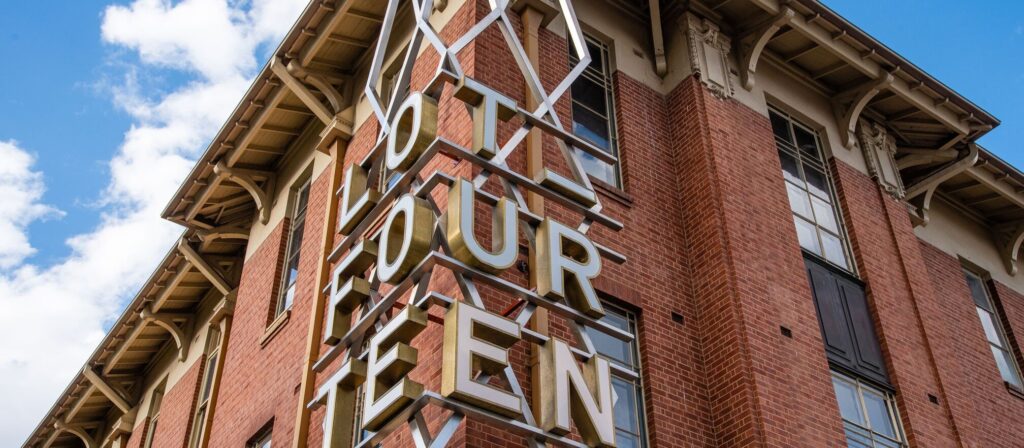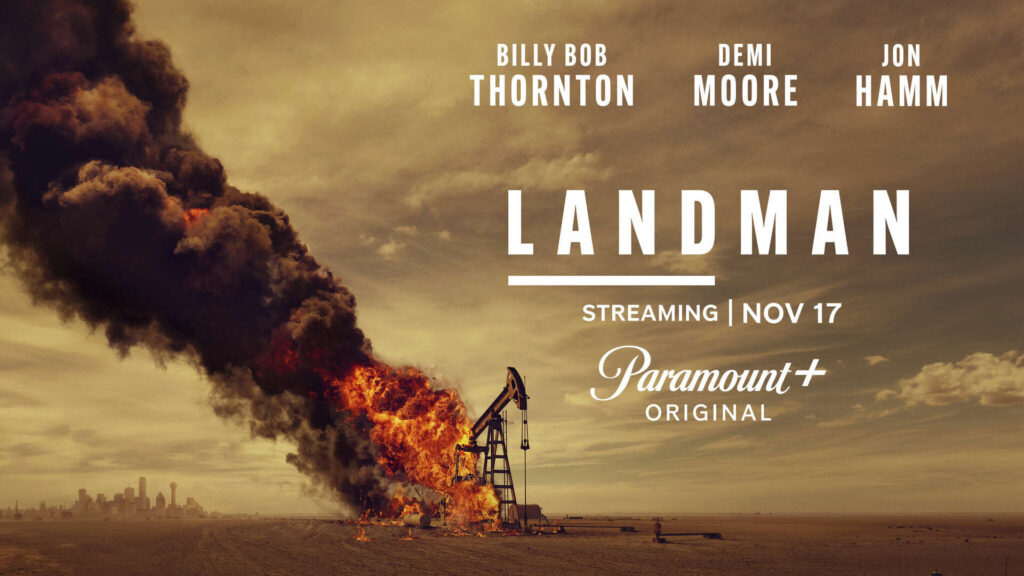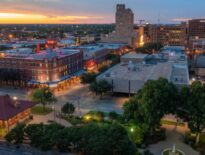
Adelaide’s not merely dipping a toe into space, it’s building its own launchpad, and during a recent whirlwind tour of the United States, I had a chance to share some thoughts with a few of the startups making the rounds and decided to dig in deeper to some possibilities. Under the radar, this ecosystem has flourished into one of the most sophisticated aerospace clusters in the Southern Hemisphere. Where Sydney and Melbourne shine with the coastal glamour of Silicon Valley, Adelaide quietly stacks capabilities, policies, and partnerships to become space-worthy; much more like Texas, which we’re going to explore.
The Texas chapter of Space Force Association hosted an incredible evening at Q-Branch, spotlighting international collaboration with the South Australian Trade and Investment Commission (Austrade).
Article Highlights
- Adelaide’s Startup Fabric: From Hospital Wards to Rocket Yards
- Western Australia: The Infrastructure Backbone
- Australia’s Aerospace Momentum
- Collaboration Horizons: Australia & Texas in Orbit Together
- The Science & Policy Framework: Why This Space Matters
- Ground-Level Opportunities for Australia – Texas Teams
Adelaide’s Startup Fabric: From Hospital Wards to Rocket Yards
Adelaide has undergone a culture shock. A repurposed hospital complex, Lot Fourteen, now hosts more than 56 resident startups and over 700 employees focused on deep-tech, space, and defense. It’s curve-jumping faster than a rocket stage reaching orbit and exactly what economic development offices and local officials need to be doing in repurposing existing property for innovation.
Supported by Stone & Chalk and South Australia’s Seed-Start grants, the site’s accelerator track has helped over 100 startups raise more than AUD 180 million since 2019. Startup Genome even named Adelaide as one of the top 100 emerging ecosystems, escalating it by 25 spots, with regional valuation shooting up 19% to AUD 1.9 billion in the last few years. Impressive? Absolutely. But it’s just the trailer.

What’s happening inside Lot Fourteen is a roadmap that I’ve trumpeted before, and increasingly demand cities are intentional about doing before I’ll get involved in nurturing the startup ecosystem: public private partnership beyond more than what’s locally available. The Australian Space Agency and SmartSat CRC anchor a magnetic cluster of hard-tech startups like Fleet Space, Inovor, and Myriota. Research spinouts like Mesh in Space and Human Aerospace are creating cybersecurity protocols for satellite constellations and medical devices derived from astronaut compression suit technology. We’re talking real science, not press?release fluff, where entrepreneur, research, and public application converge.
And it’s paying off. Lot Fourteen is expected to host 6,000 knowledge workers and 700,000 visitors annually when fully built out, including Indigenous-led ventures via The Circle. Adelaide isn’t copying Silicon Valley; it’s sticking to its roots: lean, purpose-built, and fiercely ecosystem-driven (sounds familiar).
Western Australia: The Infrastructure Backbone
What I’ve advocated for decades, is that cities stop looking within and instead look beyond. Both in terms of thinking regionally, not locally, but also beyond the present, as history, future challenge, and opportunities, are all critical dependencies in creating a startup ecosystem more than mere software engineers. Shifting west: WA is not just space-adjacent, it’s mission-critical infrastructure territory. The Western Australia Space Industry Strategy 2024–30 lays out a methodical, long-term roadmap backed by $70 million in state funding and another $25 million-plus in co-investment.
The state’s claim to fame? Over 60 years of space heritage, from supporting NASA’s Mercury–Gemini–Apollo missions in the ‘60s to hosting the Pawsey Supercomputing Centre, radio astronomy labs (like SKA via ICRAR), and quake-silent desert range zones.
Strategic projects anchor this ecosystem:
- SpAARC (Space Automation, AI & Robotics Control Complex): co-funded by Fugro and government, operational since Nov 2022, managing Intuitive Machines’ IM-1 lunar mission.
- TeraNet: optical ground station network delivering 1,000× faster communication than radio, built around UWA and ASA grants.
- Binar CubeSat Program: Curtin University’s first satellites, launched August 2021, support graduate training and outreach.
- AROSE: remote-control labs funded for robotics and range crossover from Pilbara mining to lunar rovers, winning ASA Trailblazer grants.
Infrastructure AND culture: Long-term, targeted, and globally integrated. With what’s going on here, and what we’re talking about in and around Adelaide, perhaps you can start to see how and why your city is ONLY meaningful to entrepreneurs IF you are far more than a coworking space and startup accelerator.
Australia’s Aerospace Momentum
The review by the Australian Space Agency sets the tone: aiming to triple industry revenues to AUD 10–12 billion by 2030, with over 20,000 jobs.
Recent milestones include:
- 2022: First commercial NASA rocket launch from Arnhem Space Centre, signaling international trust and capability.
- 2023–24: Investments in Fleet Space (raised AUD 50million to scale satellite deployments).
- Southern Launch partnering with the Australian Defence Force for local hypersonics tests.
- Venture Catalyst Space (UniSA) supporting 36 startups, raising AUD 31?million, adding 220 jobs.
- Mobile insulin farms, polymer fuel tanks, and lunar rover components being prototyped.
Beyond startups, defense players like Boeing Australia cite Australia’s southern hemisphere placement and infrastructure as a strategic advantage, supporting advanced manufacturing and quantum systems .
In short: it’s the rare ecosystem that’s building across the stack, from policy to payload if you will, in a way that very few regions are the world are doing despite those of us in the trenches telling local leaders and policy makers that this type of collaboration is the only thing that works.
Collaboration Horizons: Australia & Texas in Orbit Together

Okay, so a trade mission from Adelaide recently made its way through New York City, Washington D.C., and then Texas; where, to the surprise of some, they made their way to Midland, Texas, a place you might know only because of Landman on Paramount (a reminder that media matters). Picture in your mind, the expanse of west Texas with Midland a reflection of where in West Australia, while we appreciate that (as such) Austin and Adelaide create epicenters connecting east and west. In the case of Australia, Adelaide gets us close to Melbourne and Sydney while Austin bridges west Texas to Houston and Brownsville. In two hemispheres on opposite ends of the world, we have the qualities of allies in arms, prepared to work with one another like nowhere else possible on the planet.
When I visit you to explore the development of your ecosystem and you proudly beat the drum of your city being “perfect for…” perhaps you can see why I hang my head in disappointment and then ask that we meet with your national government. Stop thinking about what you want and could do there and start thinking about what you can accomplish because of there.
Australia and Texas are complementary, built for mutual lift-off. Here’s where Texas plugs in:
Midland & West Texas: Blue Origin and other suborbital programs in the desertlands mirror Western Australia’s (WA) range strategy. NBAA match-making opportunity? Absolutely.
Brownsville/Boca Chica: SpaceX’s Starbase is a livefire test for reusable rockets; Australia’s Southern Launch could host downstream payloads or capitalize on launch-readiness training across hemispheres.
“As we position Brownsville at the forefront of the new space economy, this accelerator marks a critical investment in the future of our region—fostering scalable ventures and sustainable economic growth from the ground up.” – Cori Peña; CEO at Brownsville Community Improvement Corporation
Houston: home to NASA’s Johnson Space Center and medical/biotech spinouts. Remember Adelaide’s Human Aerospace, those compression devices were made for clinical-stage trials. Opportunities for clinical crossover, dual-use tech, and talent exchange are ripe, with HA scientists pitching to NASA’s human spaceflight division.
Austin: where AI, quantum, and software talent meet. Australia’s quantum ground station ambitions in WA align with plans at UT Austin; co-development possible in satellite encryption or deep-space imaging.
On the defense side, AUS–US collaborations are deepening. Brig. Gen. Anthony Mastalir (US Space Forces Indo-Pacific) emphasized at the 2024 Australian Space Summit, “We’re moving rapidly toward becoming more resilient and interoperable with our allies and partners.” Australia already hosts multiple NASA tracking stations, including Parkes and Canberra, so pipeline-ready ground stations in WA are a logical scale-up partner.
In short: Australia offers infrastructure, capacity, and complementary use?cases; Texas offers launch-readiness, talent, and capital networks. Regional collaboration strategies should aim at:
- Joint payload validation across hemispheres
- Dual?use resourcing in robotics, AI, quantum
- Human spaceflight and clinical trial tech pairs
- Defense interoperability in satellite data resilience
The Science & Policy Framework: Why This Space Matters
Jumping to space isn’t just sexy, it’s strategic. While most remain in a fervor about AI and taking advantage of that exuberance, the fact remains that AI will become as ubiquitous as the internet itself so we should remain focused on distinct sectors of the future (i.e. quantum, robotics, transporation, and space). Research from RAND Corporation and ANU warn that counter-space weaponry from China and Russia raise “hazardous debris risks.” The world wants redundancy, diversification, resilience, and that is exactly what Australia offers via southern ground stations, launch diversity, and radalt-safe zones (which yes, is a thing I discovered and learned about in putting this paper together).
The WA and South Australian strategies are rooted in this — they explicitly reference defense?grade resilience, standards-aligned launch protocols, and sovereign payload capability.
Ground-Level Opportunities for Australia – Texas Teams
If you’re running a VC, startup, or government office, here are actionable initiatives:
- Co-develop dual-hemisphere testing facilities, such as matching Brownsville launch operations with WA ground stations
- Foster innovation partnerships, as you might in combining Adelaide’s Human Aerospace spinouts and Houston’s medical infrastructure
- Develop readiness accelerators or venture studios that cater to suborbital tests in West Texas and orbital payloads via Australian ranges
- Host defense resiliency workshops, cross-training Texas based Space Force staff with WA’s SpAARC and AROSE automated?control setups
- Quantum R&D, linking TeraNet optical ground station projects with Texas’s quantum startups
- Tie in public affairs professionals and economists so that we can accelerate public policy, legislative actions, funding, and private sector engagement
Adelaide and Western Australia aren’t in a space race with Texas; they’re in a space relay. Where Texas brings legacy, capital, and launch-side experience, Australia offers unique infrastructure, regulatory alignment, and hemispheric coverage.
Huge thank you for inviting me to speak with the startups, and to Stuart Nutting for leading the South Australia delegation, Marcos Cervantes and Josh Zelman or Q-Branch, Lauren M. Postler, MSSW for organizing the time in Texas, Bill Woolf as SFA CEO & President, Eric McManus of SFA Texas, Modi Ramos from SFA Texas’ Midland Satellite, Sam Peterson, Lisa Huron, Claire Guzman, and Nikki Krishnadatt, MBA of SFA Texas in Austin.
Friends, get to know Bryn Jones of EntX, Kim Singh from EvoSonic Ai, Matt Tetlow of Inovor Space, Herve Astier from Neumann Space, and George Freney with Space Machines Company, with whom I spent some time.
Investors, VC funds, governments: stop seeing competition and start mapping collaborative trajectories.
Start by integrating your strategy: startup and corporate, venture capital and grant, city and state… Where could your launch debut in Texas — and return for analysis in Western Australia? The future isn’t about punching above your weight, it’s about knowing when to combine strengths.
This is a collaboration blueprint.



Good article from Paul O’Brien reflecting the progress South Australia is making in maturing its startup ecosystem and supporting its space industry through partnerships and intentionality in its hard and soft infrastructure
Much more to come. A lot of opportunities here. cc Eric McManus
Julie Wagner – this might be of interest to your team. Paul’s article touches on the intentional blending of physical, economic and networking assets at Lot Fourteen and beyond – something you and the GIID team have been sharing with us all
Stephen Rutter Mani Thiru Maria MacNamara
Thanks for sharing, Aron and thanks Paul O’Brien for the great snapshot of just some of the great activity at Lot Fourteen!
Amelia Loye nice to see you Amelia + thanks for resharing with those three wonderful people
Thinking ahead and sparking innovation in orbit and beyond!
Thanks Paul, was great working with you
Paul O’Brien, fantastic to have your support at last week’s Space Force Association / SFA Texas Australia Delegation events. Eric McManus, Richard “Chris” Hyde,Claire Guzman, Space Workforce Incubator for Texas (SWIFT) team, New Space Hub, and I look forward to seeing you again next week on Thursday, July 10, from 6-8pm at Capital Factory for our next monthly Ecosystem Space gathering -> https://www.eventbrite.com/e/ecosystem-space-happy-hour-tickets-1384345989119
It was a pleasure meeting you. Let this be the first of many international delegations looking to collaborate on developing the space economy in the great state of Texas!
Sam Peterson Sam you didn’t tell me you were visiting…
In this case, Australian companies visited Texas. Later this year I am planning to be in Australia (for the first time) for IAC.
Sam Peterson Well let me know..and book your Bridge Climb early…
Paul that sounds totally cool. My wife received her Masters at University of South Australia in Adelaide. The start up seen is hopping in Colorado Springs. Check out Exponential Impact, Venture Attractor connected to UCCS and Catalyst Campus with a focus on Defense and Space!
Are you referring to Midland in WA? If so, great to hear this previously underutilised space is continuing to grow!
Are you referring to Washington or Western Australia?
p.s. Midland is in Texas (but I think you know this already).
Sam Peterson there’s a Midland in Western Australia that i was thinking of. Sounds like I should visit both regions!
https://en.wikipedia.org/wiki/Midland,_Washington
Thanks for being involved in a great event Paul.
Space will be a commercial affair..? how well are we preparing for that reality?
Space is a global economy, spaceports the hubs of this evolving economy; as we pivot from the military-industrial base to the space-technological base are we moving in the right direction, are we preparing the platform, are we creating the synergies needed?
Really worth attending the Global Spaceport Alliance’s forum..right before the IAC (Sept 28, Sydney): bringing regulators, legislators, investors, science and commerce together.
Limited to 100 luminaries, such an important discussion to be had in development of Australia’s industry.
Gabrielle M Caswell – Excellent point, Gabrielle, yes space is undeniably a commercial frontier, and shaping its future requires foresight, which is where we will be. Would love to connect with you!
Thanks for helping with the pitch polishing Paul O’Brien – we are all now telling much better stories about the impact our companies will make!
George Freney my pleasure, it changes everything for you
Coalitions are super hard to build. Clusters. Ecosystems. Coalitions. You have to have people who buy in to your vision and your vision and their vision must mesh.